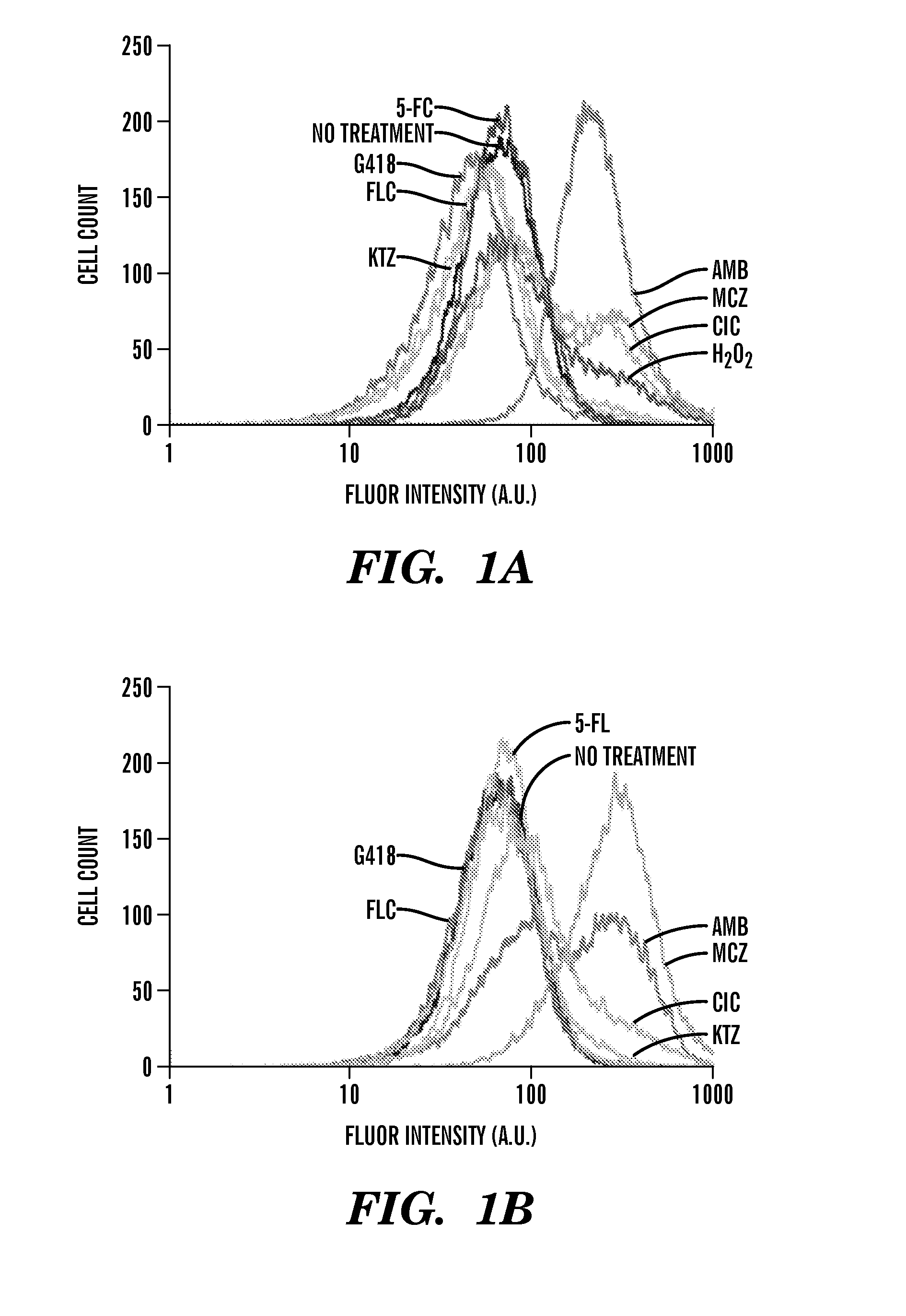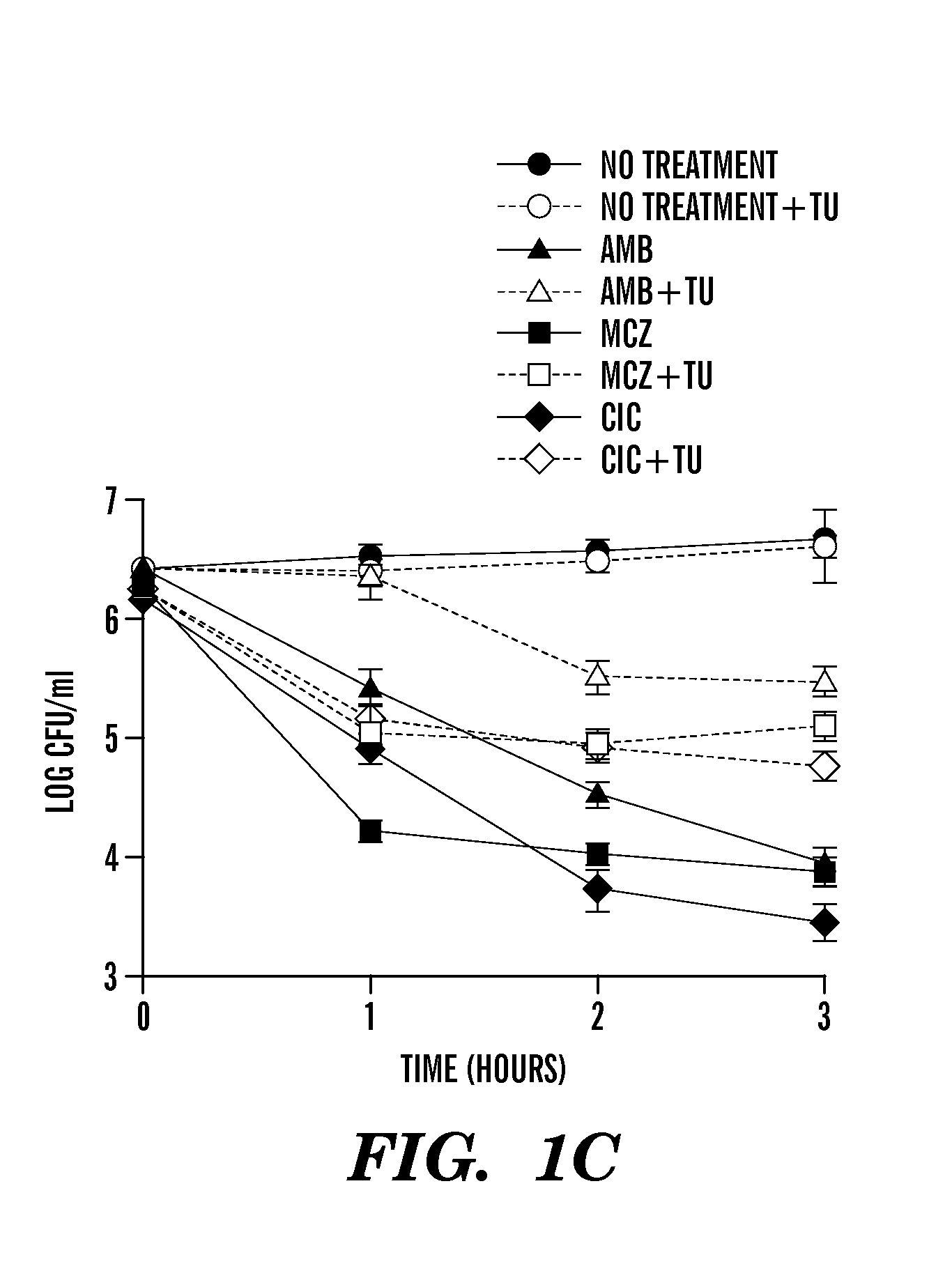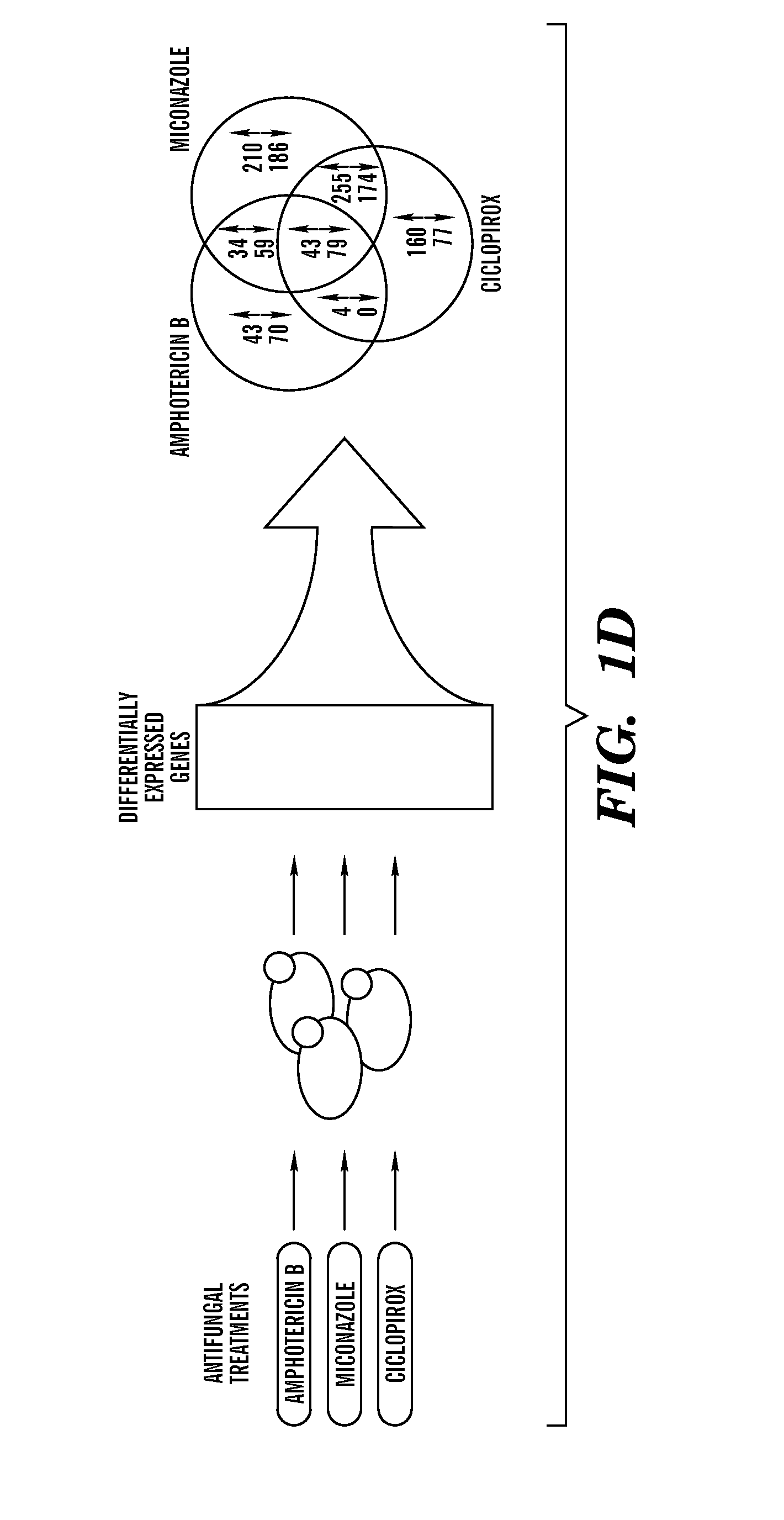Compositions and methods for treating fungal infections
- Summary
- Abstract
- Description
- Claims
- Application Information
AI Technical Summary
Benefits of technology
Problems solved by technology
Method used
Image
Examples
example 1
[0408]Described herein are results demonstrating that 1) fungicide-dependent ROS production leads to fungal cellular death; 2) the TCA, ETC and RAS / PKA pathways are involved in fungicide-induced cellular death; 3) antifungal agents elevate mitochondrial activity, the AMP / ATP ratio, and sugar production; and 4) DNA damage plays an important role in fungicide-induced cellular death.
[0409]Amphotericin, miconazole and ciclopirox are antifungal agents from three different drug classes that can effectively kill planktonic yeast, yet their complete fungicidal mechanisms are not fully understood. Employed herein is a systems biology approach to identify a common oxidative damage cellular death pathway triggered by these representative fungicides in Candida albicans and Saccharomyces cerevisiae. This mechanism utilizes a signaling cascade involving the GTPases Ras1 / 2 and Protein Kinase A, and culminates in death through the production of toxic ROS in a tricarboxylic acid cycle- and respirato...
example 2
cAMP Modulators Elevate Antifungal Activity
[0522]The model of the common death pathway induced by fungicidal drugs described above herein involves a signaling and metabolic cascade initiated by cAMP regulated RAS / PKA signaling. Based on this observation it was hypothesized that activating this pathway by inhibiting cAMP degradation with caffeine or providing dibutyryl-cAMP (db-cAMP) would elevate cellar death through activation of the Ras pathway. Consistent with this hypothesis pretreatment of Candida albicans with 10 mM db-cAMP or caffeine for 30 minutes improved AMB activity (FIG. 9).
example 3
[0523]It is demonstrated herein that yeast cells undergo dramatic metabolic changes following drug treatment, and thus provides methods to enhance the cidal impact of these changes by modulating the extracellular metabolic environment. One of the more dramatic metabolic changes observed was induction of intracellular glucose. Accordingly, it was hypothesized that reducing glucose levels below the high levels present in SDC media would apply additional metabolic pressure, sensitizing yeast cells to AF agents, i.e., reducing media glucose levels would force yeast cells to activate energetically costly gluconeogenesis in order to synthesize trehalose and maintain elevated intracellular glucose levels in response to AF treatment.
[0524]Exponential phase C. albicans was incubated in glucose-free SDC media for 60 min and then switched them to SDC containing glucose concentrations of between 20 mg / ml (normal SDC glucose levels) and 0.65 mg / ml glucose. Yeast cultured on the modified glucose ...
PUM
| Property | Measurement | Unit |
|---|---|---|
| Stress optical coefficient | aaaaa | aaaaa |
Abstract
Description
Claims
Application Information
 Login to View More
Login to View More - R&D
- Intellectual Property
- Life Sciences
- Materials
- Tech Scout
- Unparalleled Data Quality
- Higher Quality Content
- 60% Fewer Hallucinations
Browse by: Latest US Patents, China's latest patents, Technical Efficacy Thesaurus, Application Domain, Technology Topic, Popular Technical Reports.
© 2025 PatSnap. All rights reserved.Legal|Privacy policy|Modern Slavery Act Transparency Statement|Sitemap|About US| Contact US: help@patsnap.com



